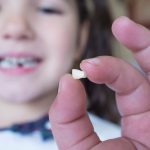The Trump administration has officially postponed the implementation of the significant disproportionality rule, which was meant to take effect this month, for two years. The rule would establish a standard to prevent children from particular racial or ethnic groups from being incorrectly placed in special education. The Department of Education states that additional time is required to evaluate the issue and determine how to serve students with disabilities without increasing the risk that these students are denied a free and appropriate public education.
The Impossible Dream, a wheelchair accessible watercraft, and its crew, spend the summer days sailing up the east coast from Miami, offering free sailing trips to wheelchair users. The boat is equipped with a lift, extra handles and low countertops. The Impossible Dream came to Philadelphia to celebrate the Fourth of July and took former rehabilitation patients sailing.
Students at Newark Charter School addressed the stigmatization of individuals with mental disabilities and people using service animals for a class project. After the students shared their concern with Rep. Ed Osienski, his team found disparities between Delaware Code and the ADA. He drafted legislation to update the language in Delaware, to include mental disability and change “support animal” to “service animal”. The bill awaits Gov. John Carney’s signature.
Delaware’s 149th General Assembly has come to an end. Legislation passed during the session involving disability includes a bill that allows special education students to earn a diploma rather than a certificate of performance and the Alex Eldreth Autism Education Law, which expands the Delaware Autism Program. A post-secondary scholarship program for individuals with intellectual disabilities awaits Gov. Carney’s signature.
Dr. Manish Arora, professor of environmental medicine and public health at Icahn School of Medicine, has developed a strategy using baby teeth to analyze exposures to possible toxins during fetal development to assess whether children who develop autism are biologically different early in life. Scientists used this technique to compare early zinc and copper metabolism in children with autism with their siblings without autism.





